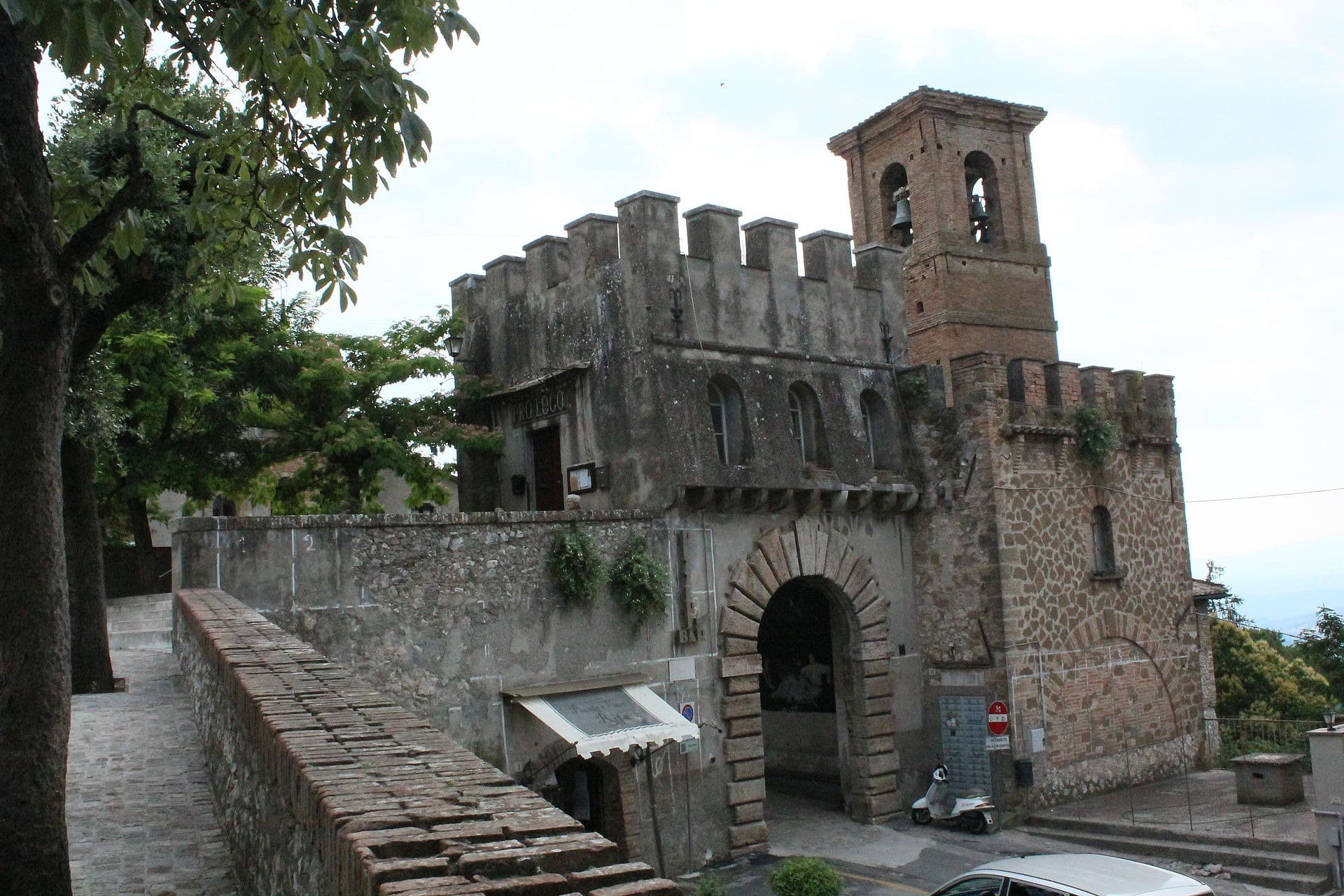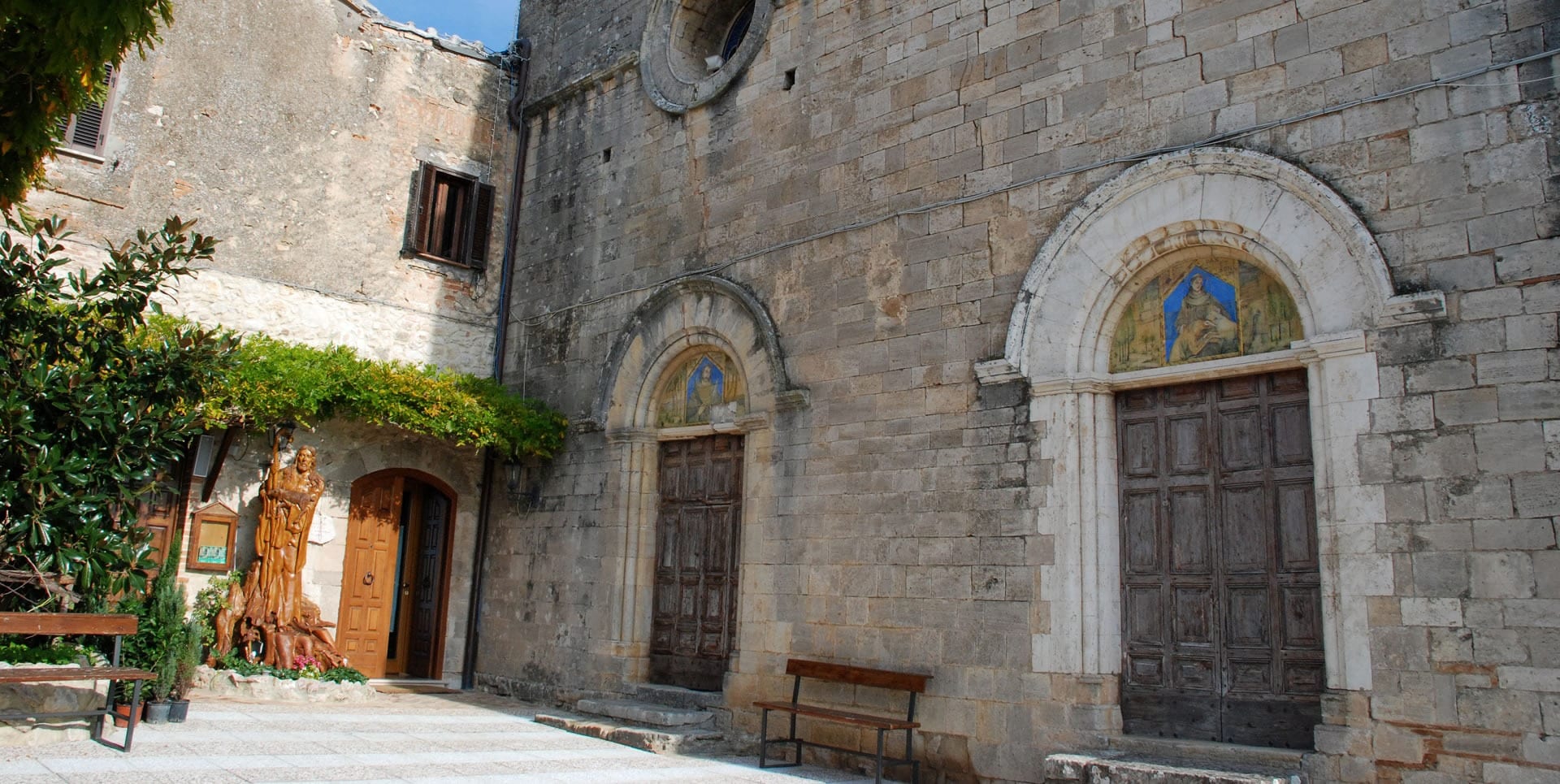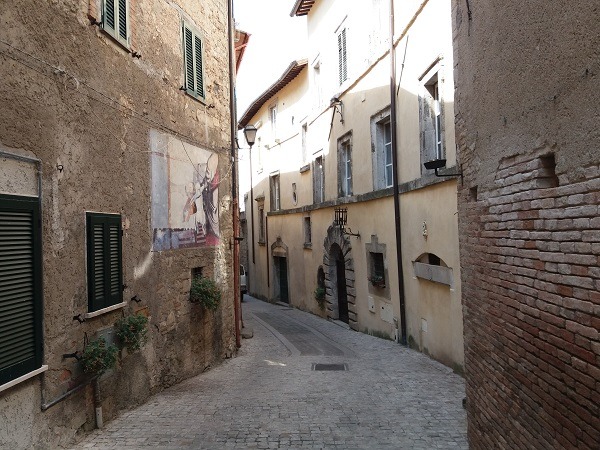Calvi dell’Umbria: The Gate Of Happiness Of Umbria
Calvi dell’Umbria is a picturesque village located in the Umbria region of Italy, approximately 80 km south of Perugia and 20 km southwest of Terni.
This small commune is perched on the slopes of Mount San Pancrazio.
It offers stunning panoramic views of forests, valleys, fields, and vineyards stretching from the surrounding mountains to the Tiber Valley.

Calvi dell’Umbria, Province of Terni, Umbria, Italy
Calvi dell’Umbria, the ancient Carbium, is also defined as ‘the Gate of Happiness of Umbria.’
The history of Calvi dell’Umbria dates back to the Bronze Age, with evidence of early settlements found throughout the area.
The village, however, began to develop as an urban center in the High Middle Ages.
Initially a fief of the Orsini and Anguillara families, the village saw its share of historical upheavals, including sieges by the Lanzichenecchi in 1527 and French soldiers in 1798.
Despite these challenges, the village thrived under the administrative autonomy granted by the Papal States from the 15th to the 19th centuries before becoming part of a unified Italy in 1860.

Architectural and Artistic Treasures
Calvi dell’Umbria’s historical center is a maze of medieval lanes, arches, and ruins of city walls and towers.
Among its most significant sites are:
The Monastero delle Orsoline:
The museum is located in the historic center of Calvi dell’Umbria.
The structure is a notable example of 18th-century Italian architecture.

It was created by combining the 16th-century Palazzo Ferrini with two churches, all unified by a monumental facade designed by architect Ferdinando Fuga between 1739 and 1743.

This former Ursuline convent now houses a civic museum and picture gallery, showcasing important works of religious art, including the renowned “Immacolata Concezione” attributed to Masucci.

The Church of Santa Maria Assunta:
The church is the main Roman Catholic church located in the town of Calvi dell’Umbria.
It was built in the second half of the 13th century.
The main altarpiece, created by Salvatore Pierella in 1737, shows the Madonna of the Assumption and San Pancrazio.
To the left of the nave is the Sernicoli Chapel, which has an altarpiece of the Enthroned Madonna and Child between Saint Blaise and Berardo by the Cavalier d’Arpino, painted around the 1630s.
On the right side of the nave, the Fioretti Chapel features a painting of the Circumcision of Jesus by Calisto Calisti of Bagnaia from 1640.

The Church of San Francesco:
The Church of San Francesco and the Convent of San Berardo are located about 500 meters from the walls of Calvi, on a hill between the valleys of Otricoli and Magliano Sabina at the old road intersection to Narni.
According to tradition, they were built on land owned by San Berardo’s family.
In 1213, a young San Berardo from Calvi was inspired by the preaching of San Francesco, the “Poor Man of Assisi.”

Berardo followed San Francesco and was sent to Morocco to spread the Gospel, where he was martyred with five other brothers.
There is documentation from 1291 about the early church, which was originally dedicated to St. Victoria, and the adjoining small oratory.

The oratory contains two rooms, one of which is raised. It was incorporated into the rear building after being looted and set on fire by Landsknecht mercenaries in 1527.
The church, built of local limestone, has been restored several times during the seventeenth and eighteenth centuries.
It has a square-shaped façade topped by a tympanum, a single hall with a barrel vault, ten side chapels, and some valuable paintings.

The small piazza in front of the church leads to a square cloister with a thirteenth-century well at its center.
The walls feature remains of frescoes depicting scenes from the life of San Francesco, dating from the second half of the seventeenth century.
The Church of the Holy Trinity:
The church, initially dedicated to the Madonna delle Grazie, was built in 1523 by Rinaldo Iacovetti from Calvi.
It was constructed where a miraculous image of the Madonna on a house wall had shed tears.
The church was also called Madonna dello Sportello because it was near an ancient town gate called the Sportello, part of the old city walls before the town expanded towards the valley.

The building has multiple levels and is designed to “climb” up the rocky ridge of the town.
Its plan includes an octagonal presbytery area covered by a dome and a rectangular area for the faithful, covered by a cross vault.
These two parts are connected by a large triumphal arch, creating a unified space.

Inside, there is a mid-15th-century fresco of the Madonna and Child.
Outside, the church features a carved limestone portal with an architrave inscribed with “AVE REGINA CELORUM.”
The eaves are decorated with tiles, and the octagonal lantern is adorned with pilasters with terracotta frames and capitals, covered with brick shingles placed side by side.
The Old Streets
Calvi dell’Umbria’s old streets are a charming labyrinth of medieval lanes that wind through the historic center of the town.

These narrow, cobblestone paths are lined with ancient buildings, arches, and vaults.

Walking through these streets, you’ll see a mix of old and new.

The buildings, some dating back to the Middle Ages, have been carefully preserved and restored.

The murals of Calvi
The most striking feature of the old streets are more than eighty murals.

Calvi dell’Umbria is famously known as the “Christmas Crib Town.”
Since 1982, well-known Italian and talented artists from Belgium have frescoed the facades of ancient houses with nativity scenes.

All the murals are inspired by the birth of Christ, with each artist offering their own interpretation, helped by the local community.

